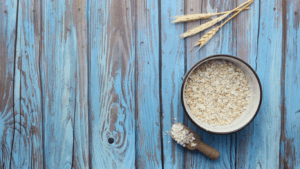Dal, an essential part of Indian cuisine, offers a wealth of nutrition and health benefits. This comprehensive guide will cover the various types of dals, their nutritional profiles, health benefits, and delicious ways to incorporate them into your daily diet. Whether you’re a seasoned dal lover or a newcomer looking to explore this superfood, this guide has everything you need.
What is Dal?
Dal is a term used in the Indian subcontinent for dried, split pulses (legumes). The word “dal” can refer to the ingredient as well as the dish made from it. Dals are typically boiled and then seasoned with various spices to make a dish that’s rich in flavor and nutrition. They are an excellent source of protein, especially for vegetarians and vegans, and are known for their high fiber content and numerous health benefits.
Types of Dal and Their Nutritional Profiles
There are numerous varieties of dal, each with its unique taste, texture, and nutritional benefits. Here, we’ll explore some of the most common types of dal and their nutritional profiles.
1. Toor Dal (Pigeon Peas)
Toor dal, also known as arhar dal or pigeon peas, is a staple in many Indian households. It’s known for its slightly sweet and nutty flavor.
– Nutritional Profile (per 100g cooked):
- Calories: 194 kcal
- Protein: 11g
- Carbohydrates: 35g
- Fiber: 7g
- Fat: 1g
- Iron: 1.3mg (7% DV)
- Folate: 38% DV
Toor dal is rich in protein, fiber, and essential vitamins like folate. It’s a great choice for a balanced diet and is often used in dishes like sambar and dal fry.
2. Moong Dal (Mung Beans)
Moong dal is known for its high protein content and easy digestibility. It’s available in split form with or without the husk.
– Nutritional Profile (per 100g cooked):
- Calories: 212 kcal
- Protein: 14.2g
- Carbohydrates: 38g
- Fiber: 7.6g
- Fat: 0.8g
- Potassium: 369mg (11% DV)
- Magnesium: 48mg (12% DV)
Moong dal is low in calories and rich in protein, making it ideal for weight management and muscle building. It’s also high in antioxidants and can help boost immunity.
3. Masoor Dal (Red Lentils)
Masoor dal, or red lentils, are known for their quick cooking time and rich nutritional profile.
– Nutritional Profile (per 100g cooked):
- Calories: 230 kcal
- Protein: 17.9g
- Carbohydrates: 39.9g
- Fiber: 15.6g
- Fat: 0.8g
- Iron: 3.3mg (18% DV)
- Vitamin B6: 15% DV
Masoor dal is packed with protein, iron, and fiber. It’s particularly beneficial for those looking to increase their iron intake and is often used in curries and soups.
4. Chana Dal (Bengal Gram)
Chana dal is split chickpeas that are hulled and polished. It’s a popular ingredient in Indian cuisine.
– Nutritional Profile (per 100g cooked):
- Calories: 269 kcal
- Protein: 14.5g
- Carbohydrates: 45g
- Fiber: 12.5g
- Fat: 4g
- Folate: 71% DV
- Iron: 2.9mg (16% DV)
Chana dal is high in fiber and protein, promoting satiety and digestive health. It’s used in various dishes, including curries, stews, and snacks.
5. Urad Dal (Black Gram)
Urad dal is widely used in South Indian cuisine for dishes like idli, dosa, and vada.
– Nutritional Profile (per 100g cooked):
- Calories: 234 kcal
- Protein: 14.4g
- Carbohydrates: 40g
- Fiber: 8g
- Fat: 1.2g
- Potassium: 982mg (28% DV)
- Magnesium: 94mg (24% DV)
Urad dal is rich in protein, fiber, and essential minerals like potassium and magnesium. It supports heart health and helps in maintaining strong bones.
Health Benefits of Dal
The nutritional richness of dal translates into numerous health benefits. Here are some key advantages of including dal in your diet:
1. Weight Management
Dals are high in protein and fiber, which help in maintaining satiety and reducing overall calorie intake. The protein content aids in muscle maintenance and repair, while the fiber ensures a feeling of fullness, helping to prevent overeating (Irasto World Health) (Clearcals).
2. Heart Health
The fiber content in dals helps lower cholesterol levels, while the potassium content aids in maintaining healthy blood pressure. Regular consumption of dal can contribute to improved cardiovascular health. Moong dal, in particular, is noted for its benefits to heart health (Keevs).
3. Muscle Maintenance
Dals are a significant source of plant-based protein, essential for muscle repair and growth. Regular consumption can help maintain muscle mass, especially in vegetarian and vegan diets (Irasto World Health) (Keevs).
4. Digestive Health
The high fiber content in dals promotes healthy digestion and regular bowel movements. They can help prevent constipation and other digestive disorders. Dals are also known for their prebiotic properties, which support gut health (Keevs).
5. Blood Sugar Control
Dals have a low glycemic index, which helps in stabilizing blood sugar levels. This makes them a good option for people with diabetes or those looking to manage their blood sugar levels. The fiber content in dals slows down the absorption of sugar into the bloodstream, preventing spikes in blood sugar (Irasto World Health).
6. Bone Health
Dals are rich in essential minerals like calcium, magnesium, and phosphorus, which are crucial for maintaining strong and healthy bones. Regular consumption can help prevent bone-related disorders and improve overall bone density (Irasto World Health).
Incorporating Dal into Your Diet
Dals can be used in a variety of dishes, from simple soups to complex curries. Here are some popular ways to enjoy them:
1. Dal Tadka
A classic Indian dish where cooked dal is tempered with spices like cumin, mustard seeds, and garlic. It pairs well with rice or roti.
2. Moong Dal Khichdi
A comfort food made with moong dal and rice, often seasoned with turmeric and cumin. It’s easy to digest and perfect for a light meal.
3. Masoor Dal Curry
A spiced red lentil curry that’s rich and flavorful. It’s great with steamed rice or naan.
4. Chana Dal Fry
This dish features chana dal cooked with onions, tomatoes, and spices, creating a hearty and nutritious meal.
5. Urad Dal with Spinach
Combining urad dal with spinach adds a nutritional boost, providing iron and vitamins along with protein and fiber.
Tips for Cooking Dal
- Soaking: Soaking dals before cooking can reduce cooking time and improve digestibility. Soak them for at least 30 minutes to a few hours, depending on the type.
- Spices: Common spices used in dal recipes include cumin, coriander, turmeric, and garam masala. These not only enhance flavor but also add health benefits.
- Tempering: Adding a tempering (tadka) of spices fried in oil or ghee at the end of cooking can elevate the flavor of the dal.
- Consistency: Adjust the consistency of your dal by adding more or less water during cooking. Some prefer a thicker dal for serving with bread, while others like a thinner soup for rice.
FAQs about Dal Nutrition
Is Dal Good for Weight Loss?
Yes, dal is beneficial for weight loss due to its high protein and fiber content, which help in reducing appetite and overall calorie intake (Irasto World Health).
Which Dal Has the Most Protein?
Masoor dal and moong dal are known for their high protein content, making them excellent choices for those looking to increase their protein intake (Irasto World Health) (Keevs).
How Much Dal Should I Consume Daily?
Consuming one to two cups of dal daily can help meet your dietary protein and fiber requirements. Adjust based on your overall dietary needs and activity levels (Keevs).
Can Dal Cause Digestive Issues?
While dal is generally good for digestion, overconsumption can lead to bloating or gas due to its high fiber content. Moderation is key (Keevs).
Conclusion
Dal is a nutritious and versatile food that can be easily incorporated into a variety of dishes. Its high protein and fiber content make it an excellent choice for those looking to maintain a healthy diet. Whether you’re aiming for weight loss, muscle maintenance, or simply looking to enjoy delicious and wholesome meals, dal is a superfood worth including in your daily diet.




